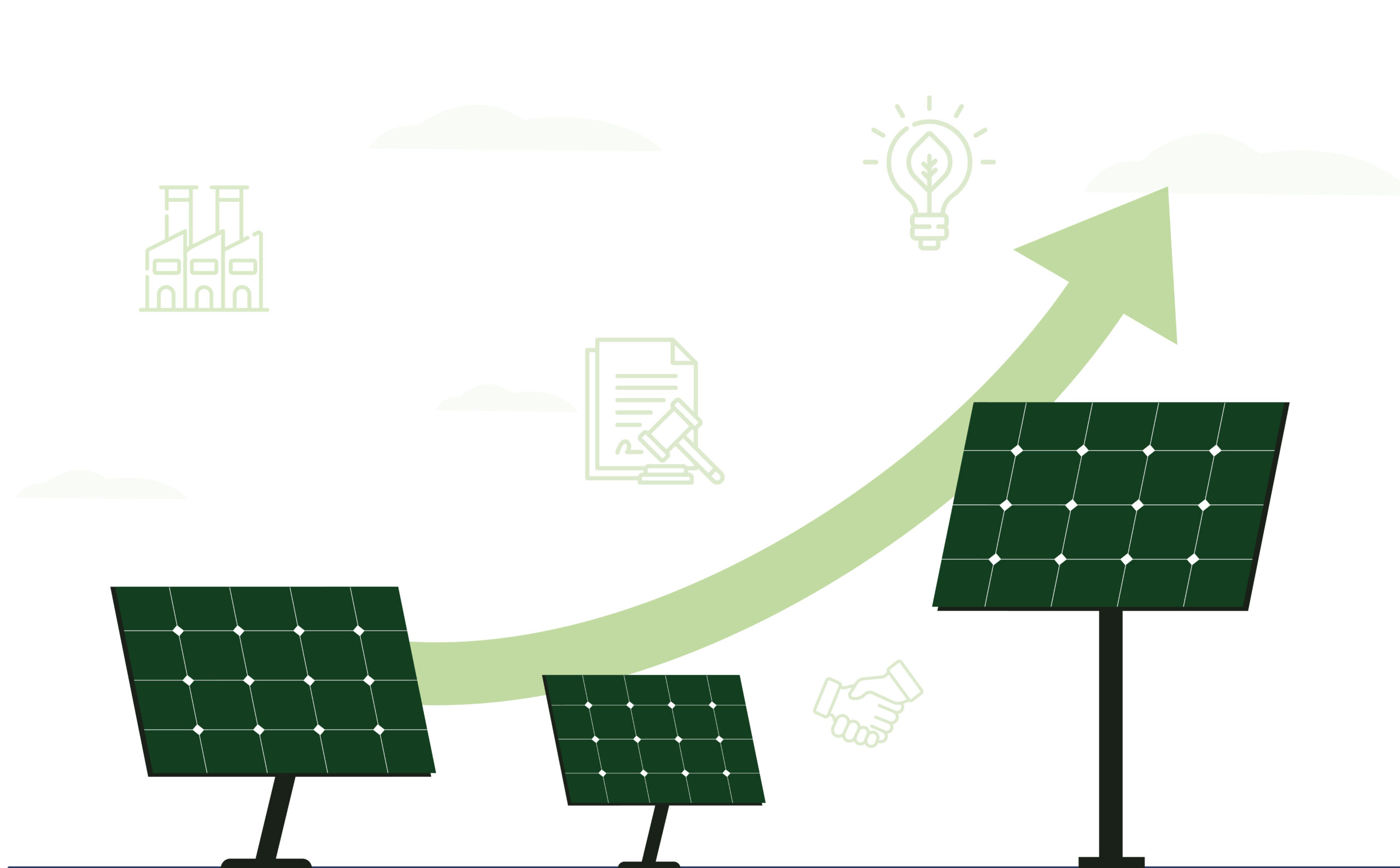Key Insights from SNEC Expo, Shanghai
June 24, 2024 | Quick Reads

In the coming decades, global energy demand is expected to significantly increase due to rising population, industrial growth, technological advancements, and increased data center usage. This growing demand, coupled with challenges such as climate change, greenhouse gas emissions, and escalating pollution, underscores the need for renewable energy solutions. Among these solutions, Solar energy has been adopted in a meaningful way leveraging its scalability, decreasing costs, and long-term sustainability.
As the power sector undergoes this rapid transition towards cleaner and greener sources of energy, it has presented investors with interesting investment opportunities. We, at Niveshaay, are particularly bullish on this trend. As part of our scuttlebutt investing approach and to gain firsthand insights into the global solar industry, we recently attended the ‘SNEC 17th (2024) International PV Power Expo’ in Shanghai, China.
Current Industry Trend
Our visit to the SNEC Expo provided invaluable insights into the industry's current landscape and emerging trends. One of the important observations was the industry-wide adoption of TOPCon technology in China. This technology boasts superior efficiency compared to the previously dominant PERC technology, and Chinese manufacturers are leading the charge with a whopping 700 GW TOPCon cell capacity. Due to cost advantages and better pricing of TOPCon cells as compared to PERC cells, most of the companies in China are strategically shifting to TOPCon and phasing out their PERC facilities. Though HJT has better efficiency than TOPCon, it is a costlier technology and the manufacturers are facing some issues in manufacturing HJT cells. China currently has 100 GW HJT cell capacity.
Dominant Position of China
The key factor behind China's dominant position in the solar industry is the robust government support. This enables them to establish massive production capacities (ranging from 10 to 20 GW) within a remarkably short timeframe of 12-18 months. This rapid scaling is fuelled by a confluence of government incentives, including free land for five years, attractive local subsidies, tax exemptions for initial years, and access to critical utilities like power and water at subsidised rates. Additionally, their fully automated production lines enable them to scale and run efficient operations through adequate human oversight.
India's Rise: Matching Ambition with Action
Despite dominance of China in the global solar industry, the Indian government has been very proactive in building the necessary infrastructure for a swift energy transition. Initiatives like ALMM (Approved List of Models and Manufacturers) and DCR (Domestic Content Requirement) have significantly benefitted Indian solar manufacturers, empowering them to cater more effectively to domestic demand and restrict competition from Chinese players. The implementation of ALMM has also led to a decline in module imports from China. A growing trend within the Indian solar sector is the intention to push for backward integration, a strategy that allows manufacturers to exert greater control over their supply chains. This move is expected to be further bolstered by the government's PLI (Production Linked Incentive) scheme.



A Golden Opportunity for Indian Solar Players
MonoPERC technology is expected to stay relevant for Indian markets for implementation under DCR and ALMM requirements. TOPCon is still in its initial phases and may take time to ramp up as only few large players in India are making TOPCon modules in limited quantity. Manufacturers who are able to transition to TOPCon technology in the near future would stand to gain a significant competitive edge. By embracing TOPCon early, they can capitalize on its efficiency benefits and establish themselves as strong contenders.
There are also circumventing and dumping allegations against few Southeast Asian countries in US markets which will create demand-supply gap. Other export markets are also expected to restrict entry of Chinese vendors due to significant overcapacity. Indian manufacturers stand to benefit due to this unique situation in the export markets.
Challenges and the Road Ahead: Building a Resilient Domestic Ecosystem
One of the key challenges on the path to self-sufficiency lies in establishing cell manufacturing facilities in India. Currently, Indian cell manufacturers are facing hurdles in securing essential utilities infrastructure and navigating restrictions on the entry of Chinese engineers to India. Companies that can commence facilities without much delay will have a significant advantage due to demand generated from DCR scheme. However, China's current overcapacity has created a unique advantage for Indian companies. Chinese equipment manufacturers who are facing constrains in domestic (China) market, are now wooing Indian companies with attractive turnkey solutions at favourable terms.
Summary
The technology in solar is changing fast with limited time available for the manufacturer to recover their investments along with decent profitability while parallelly shifting to latest technology. Due to this complicated and capital-intensive nature of the industry, it may be difficult for a new player with limited history of execution to enter the business and be successful in long run. The energy storage business has also started gaining traction in China due to falling prices of the batteries. Once available at full scale and at a reasonable cost, it will experience significant growth in the Indian market.
The SNEC Expo served as a powerful testament to the dynamism of the global solar industry. The future of solar energy is undeniably bright, and India is well-positioned to be a major player in this transformative journey. By staying informed about the latest technological advancements, government policies, and market trends, investors can make strategic decisions and capitalize on the immense potential of this rapidly evolving sector.
Happy Investing!



Disclaimers and Disclosures
SEBI Registration No. :INH000017338, IN/AIF3/24-25/1571, IN/AIF2/24-25/1607 | BASL Membership ID: 6276
Investment in Securities Market are subject to market risks. Read all related documents carefully before investing. The securities quoted are for illustration only and are not recommendatory. Registration granted by SEBI, membership of a SEBI recognized supervisory body (if any) and certification from NISM in no way guarantee performance of the intermediary or provide any assurance of returns to investors.


 Follow
Follow